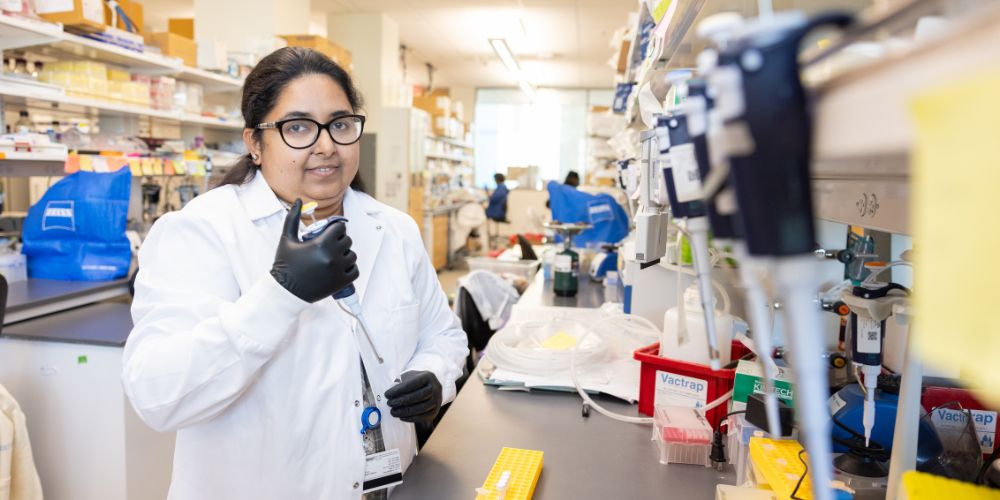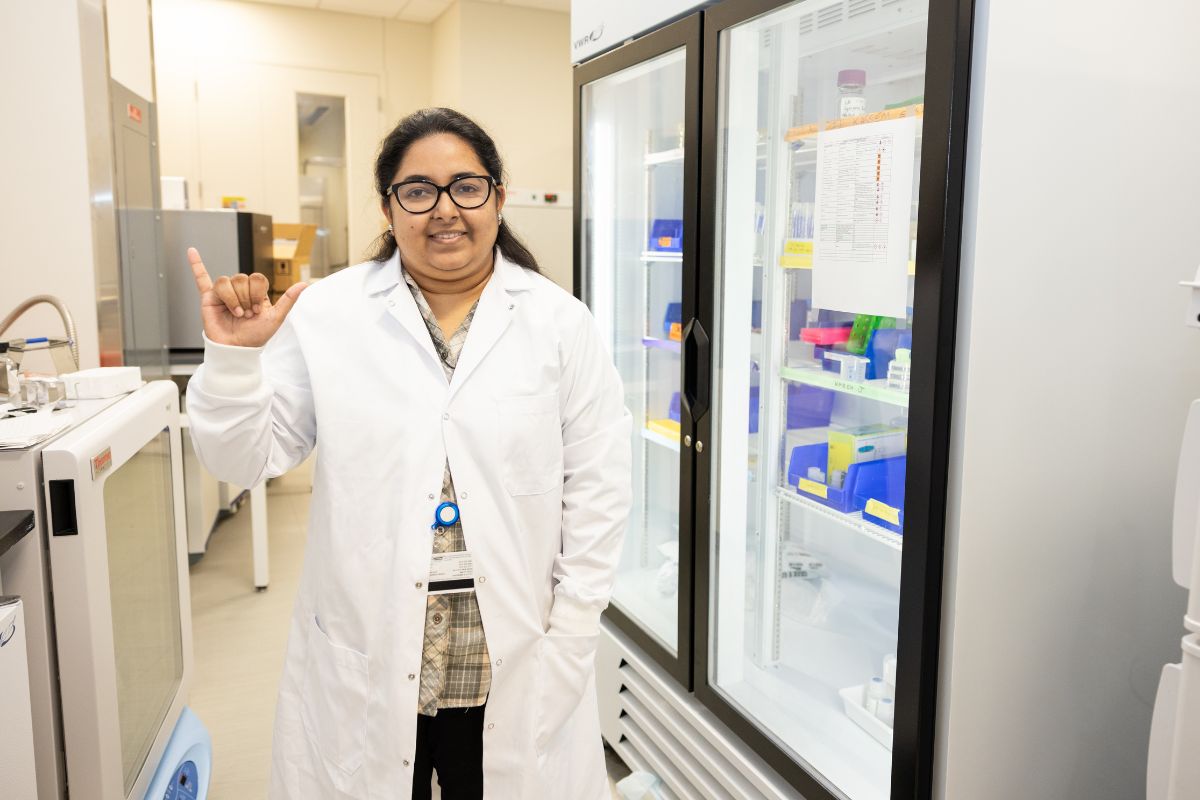
A new study from The University of Texas at Arlington has revealed how cells control their mitochondria—the "energy producers" of cells—during the process of cell death. The discovery sheds light on how the body manages this essential function and what can go wrong when the process fails.
Programmed cell death is an essential part of a healthy, normal life as the body removes old, damaged or unnecessary cells. When the process fails, the results can be serious: Cancer can develop when cells refuse to die, while neurodegenerative diseases such as Alzheimer's can occur when cells die too soon.
Rashna Sharmin, lead author of the study and a fifth-year doctoral student in the lab of Piya Ghose, assistant professor of biology at UT Arlington, investigated how mitochondria behave as cells die. Sharmin discovered that, surprisingly, mitochondria can protect a cell from dying in a way that does not involve producing energy. Instead, she found out, mitochondria play a protective role by taking in calcium—a key step needed for cells to die properly.
Related: Stress genes clear dead cells, offering disease insights
The findings offer a better foundational understanding of how complex cell death is regulated and could eventually help researchers learn more about brain development and lead to more targeted treatments for related conditions.
"I hope my work provides deeper insights into how regulation of mitochondrial transport and its ability to uptake calcium prepare complex cells to die," Sharmin said.
The study was published in Current Biology, one of the leading journals in the field, with contributions from Mark Pellegrino, associate professor of biology at UTA and an expert in how mitochondria help cells combat stress.

Related: UTA student links worm behavior to brain disease
To conduct her research, Sharmin studied an embryonic cell in the tail of the nematode C. elegans, a tiny roundworm widely used in genetic research because it shares similar genes to humans. Its transparent body allows scientists to observe live cell behavior, including how cells die. Using a super-resolution microscope in the Ghose Lab, Sharmin was able to see how "organelles are acting inside the cell in real time in a living animal."
Another key discovery was that when a protein called a caspase—known for its role in breaking down other proteins in cell death—is missing, cells begin to die but then unexpectedly recover. Caspases are well known for their role in a type of programmed cell death called apoptosis, but their precise function in compartmentalized cell elimination is an important future direction for research, the study noted.
"Rashna's work really broadens our understanding of what mitochondria can do and how they are controlled with important implications on cellular recovery," Ghose said.
This work was supported by The Cancer Prevention Research Institute of Texas (CPRIT) (RR100091) and the National Institutes of Health–National Institute of General Medical Sciences (R35GM142489).
About The University of Texas at Arlington (UTA)
Celebrating its 130th anniversary in 2025, The University of Texas at Arlington is a growing public research university in the heart of the thriving Dallas-Fort Worth metroplex. With a student body of over 42,700, UTA is the second-largest institution in the University of Texas System, offering more than 180 undergraduate and graduate degree programs. Recognized as a Carnegie R-1 university, UTA stands among the nation's top 5% of institutions for research activity. UTA and its 280,000 alumni generate an annual economic impact of $28.8 billion for the state. The University has received the Innovation and Economic Prosperity designation from the Association of Public and Land Grant Universities and has earned recognition for its focus on student access and success, considered key drivers to economic growth and social progress for North Texas and beyond.






